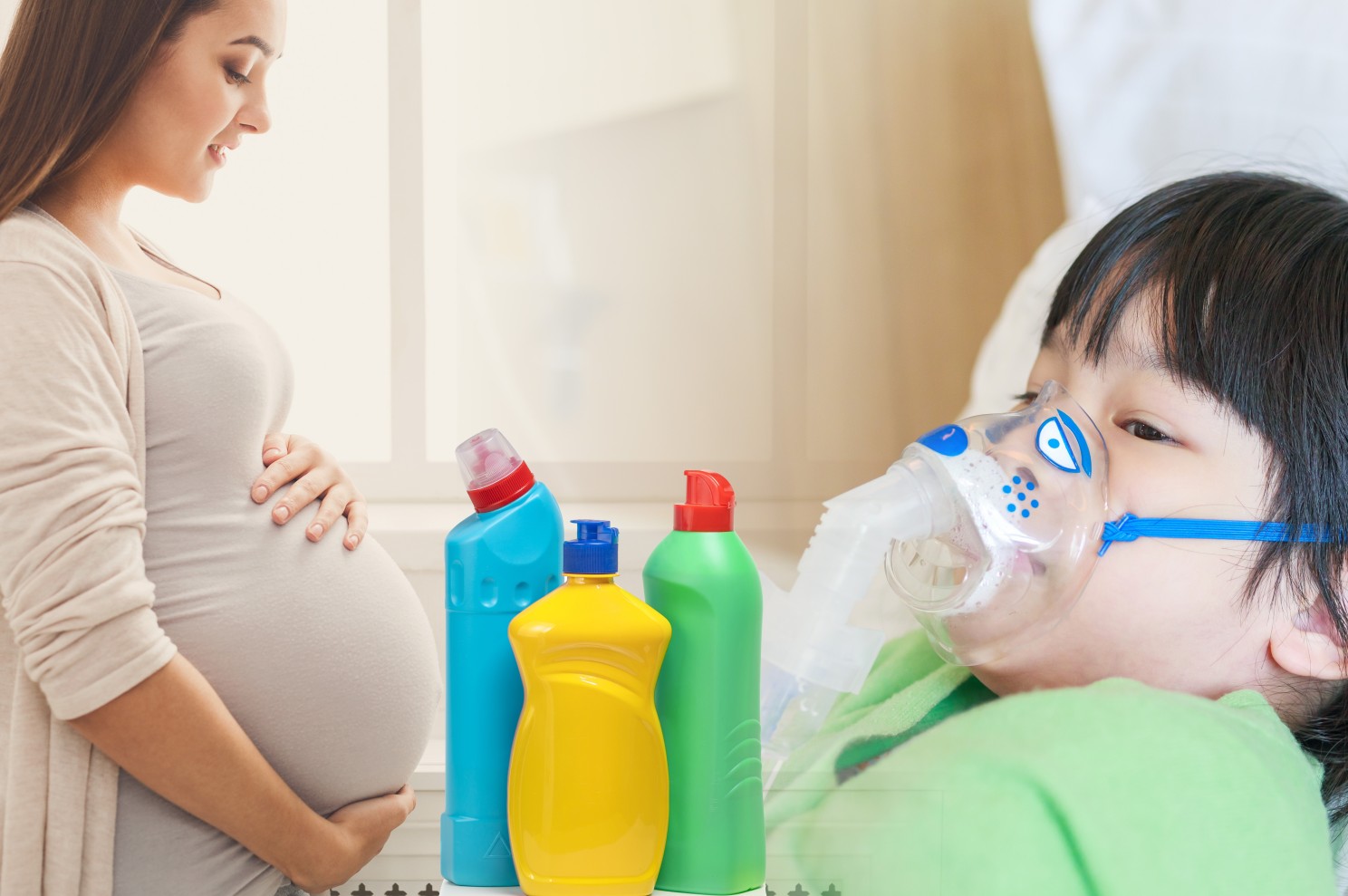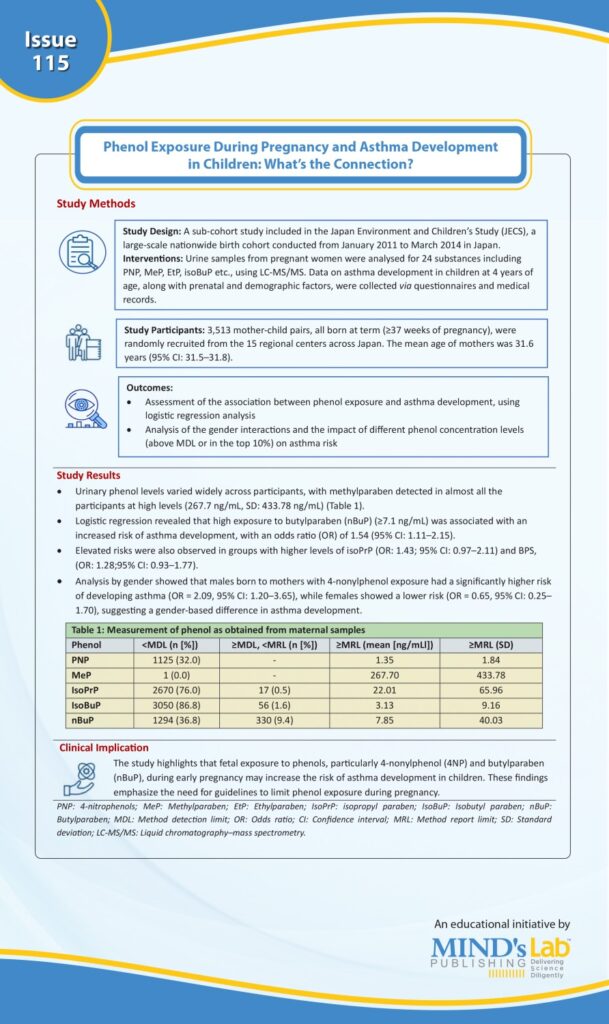
Phenols are organic compounds with hydroxyl groups attached to aromatic structures. Alkylphenols, which are formed through phenol alkylation, are intermediates in purification processes and environmental byproducts of alkylphenol ethoxylates used in household products including detergents, cosmetics etc. Common alkylphenols like octylphenol (OP) and 4-nonylphenol (4NP) are detected in soil, aquatic environments, and food. These compounds are recognized as endocrine disruptors due to their estrogen-like activity, with potential health risks, owing to bioaccumulation due to their low solubility and high hydrophobicity.
Emerging evidence suggests that maternal exposure to phenol during early pregnancy could influence the development of fetal immune system, potentially increasing the risk of asthma in children. This link may be due to endocrine-disrupting properties of phenols, which interfere with hormone-regulated developmental pathways. However, clinical evidence for this association remains limited.
A study carried out by Kuraoka et al., which was recently published in the journal “Environmental pollution” investigated the link between maternal exposure to phenols during pregnancy and asthma development in the offspring. Using data from a nationwide birth cohort, the researchers measured phenol concentrations in maternal urine samples taken during the first trimester and examined their association with asthma at four years of age in children. The study found high levels of butylparaben exposure in mothers, which was associated with an increased risk of asthma in children (odds ratio: 1.54). A gender-specific effect was observed for 4-nonylphenol, showing a higher asthma risk in males (odds ratio: 2.09). The study suggests that maternal exposure to certain phenols, particularly butylparaben, may be a risk factor for asthma development in children, providing valuable insights for future prenatal exposure guidelines (See Graphic).

(Source: Kuraoka S, Oda M, Ohba T, Mitsubuchi H, Nakamura K, Katoh T, Kamijima M, Yamazaki S, Ohya Y, Kishi R, Yaegashi N. Association of phenol exposure during pregnancy and asthma development in children: The Japan Environment and Children’s study. Environ. Pol. 2024;361:124801. Doi: 10.1016/j.envpol.2024.124801)
